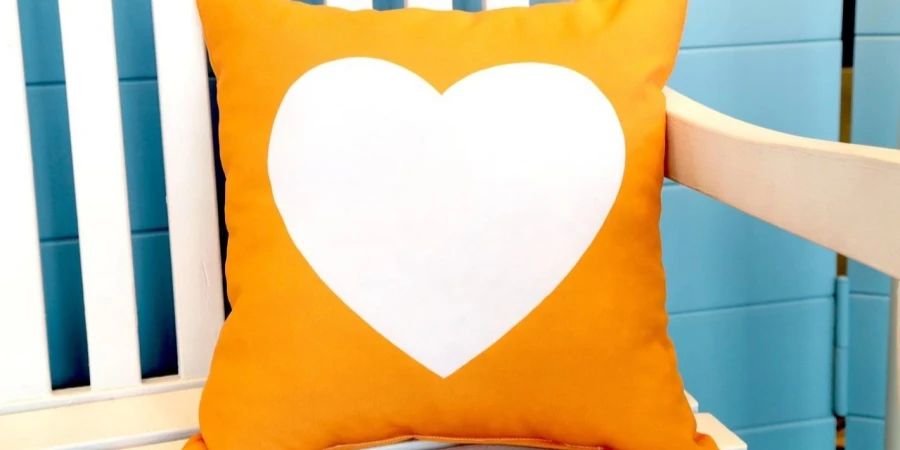Table of Contents
● Introduction
● Market overview
● Different types of cushion covers and their features
● Key considerations when selecting cushion covers
● Conclusion
Introduction
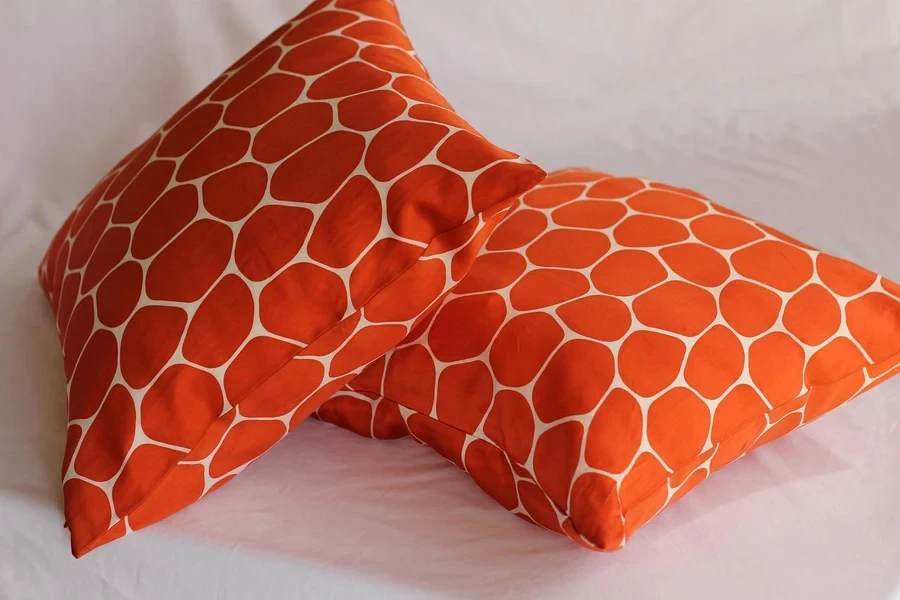
Cushion covers are essential for home decoration as they add style and coziness to any room. They offer a simple way to revamp the look of a space by enhancing its charm. With various patterns and fabrics to choose from nowadays, pillowcases have become quite popular in home decor. As consumer preferences shift towards lasting options, the demand for these items rises steadily. The growth of this market highlights the significance of choosing ideal cushion covers to improve both the visual appeal and comfort level.
Market overview

Market size and growth
The worldwide market for cushion covers was valued at around USD 13.86 billion in 2023. It is projected to reach USD 18.86 billion by 2030, showing an annual growth rate (CAGR) of 4.5% from 2024 to 2030, per Verified Market Research. This consistent expansion is primarily fuelled by the growing emphasis on enhancing home aesthetics and the increasing demand for practical home furnishings. The market is reaping the benefits of heightened consumer expenditure on home decor items, reflecting a trend toward establishing stylish living environments.
Market drivers
The market for cushion covers is mainly influenced by changing design trends as people aim to update their living spaces affordably without much hassle or expense. The rise of online shopping platforms has made it convenient for customers to explore various cushion cover options, leading to increased market demand. Moreover, the growing preference for personalized home decor items has sparked curiosity for distinct and tailored cushion cover styles. The ever-increasing focus on sustainability also backs the need for this as more customers choose long-lasting materials.
Different types of cushion covers and their features
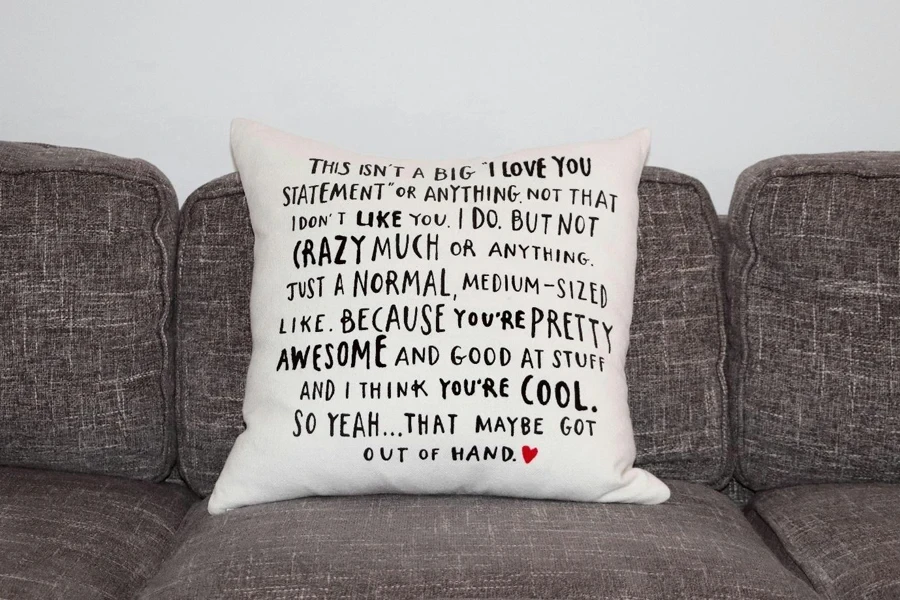
Throw cushion covers
Throw cushion covers usually come in standard sizes like 18 inches by 18 inches; however, larger options, such as 24 inches by 24 inches, are also available to suit various cushion sizes and shape needs. Derived from materials such as cotton with thread counts ranging from 200 to 400 for durability and softness, these covers are typically designed with reinforced stitching using seams to prevent fraying in high-traffic areas like the corners. Many throw pillow covers incorporate hidden zippers, providing a clean appearance and making it easy to remove when necessary. Some premium models include lining layers to improve the case’s durability and preserve its form over time.
Breakfast cushion covers
Breakfast cushions are usually crafted in 12 by 20 inches, perfect for supporting the back region comfortably and efficiently. For added charm, these cushions are typically adorned with embroidery featuring stitch densities ranging from 8000 stitches per square inch upwards. This intricate stitching adds designs that enhance their allure. Silk or satin materials are often preferred due to their smooth texture and glossy finish. However, stain-resistant coatings are applied to these fabrics regularly to ensure longevity and maintain their look. The covers come with envelope-style closures that make it easy to put the cushion in while protecting fabrics from damage.
Bolster cushion covers
Bolster cushion covers are usually tailored for cylindrical cushions measuring 6 by 20 inches or 8 by 24 inches. They are commonly crafted from a combination of cotton and polyester fabric for a balance of breathability and durability. These covers often come with piping details along the edges to strengthen the seams and enhance their appeal. To provide a perfect fit for the cushions, some designs incorporate elasticized ends or drawstring closures within them to keep the cushions firmly in place. The fabrics are frequently treated with antimicrobial finishes to stop bacteria and mold growth in humid conditions.
Outdoor cushion covers
Outdoor cushions are made from materials such as solution-dyed acrylic or olefin that are great at resisting UV rays and moisture damage. These fabrics usually have a rating of 1500 hours or higher, meaning they can handle exposure to sunlight without fading much. The covers are often treated with a polyurethane or PVC coating layer to improve water resistance while keeping the fabric breathable. Moreover, they are stitched using thread resistant to UV rays to avoid damage caused by sunlight. They also include zippers crafted from materials like nylon or resin that resist corrosion.
Floor cushion covers
Floor cushion covers are typically crafted from materials like 12-ounce canvas or thick jacquard weaves to handle being placed onto the floor without getting damaged easily. They are often strengthened with bar tacking at stress points to ensure they can endure daily use without tearing. Given their dimensions, which are around 26 by 26 inches or more, it’s important that the covers are well-made to prevent drooping. Therefore, many designs include seams or baffles to keep the cushions intact. Some models also come with a slip backing to prevent the cushion from moving on smooth surfaces.
Novelty cushion covers
Unique cushion covers are crafted with shapes like stars or animals, using fabrics such as microfleece or faux fur to offer a tactile feel to the users’ tactile experience. The designs may involve methods like appliqué or 3D embroidery, where various materials are layered or sewn together to achieve a raised appearance. Internal seams are typically secured with overlocking to prevent unraveling. The covers also include concealed closures to preserve their forms. Some unique pillowcases contain memory foam or microbeads to improve comfort and maintain their shape for a long period.
Key considerations when selecting cushion covers
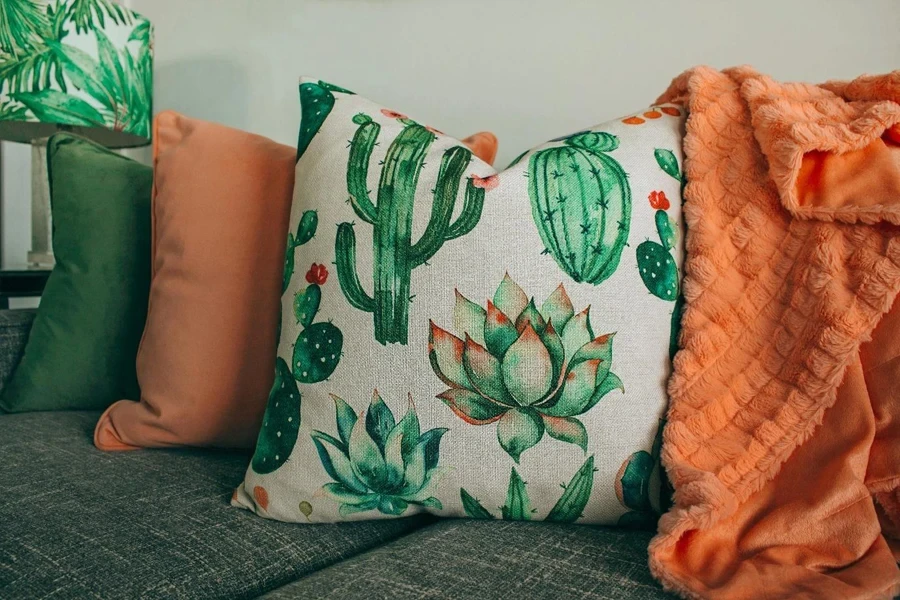
Material selection
When choosing cushion covers, the type of fabric is crucial for how they last and how comfortable they are to maintain over time. Cotton is a great choice because it’s breathable and works well in high-traffic areas. For a sturdier cover that holds up well against daily use and damage, opt for high thread count cotton ranging from 200 to 800 threads per inch. Linen is another great option with its fibers and ability to draw moisture away from the body, giving it a cool and textured feel that’s perfect for summer days. However, it tends to wrinkle easily and might need treatments, such as enzyme washes, to lessen the wrinkles. Silk’s luxurious sheen and softness are often utilized in spaces where touch and appearance matter most. Polyester and microfiber are alternatives recognized for their strength and ability to resist stains. Polyester is frequently coated with water materials for effortless maintenance and care of its surface texture. Microfiber comprises fine fibers that deliver a plush suede-like touch resistance to wear and color fading over prolonged usage.
Design and style
Choosing the ideal design and look for cushion covers is essential to match the style of the room and keep up with current trends or classic charm in the decor scheme. Modern interiors often feature geometric patterns and abstract prints created using printing methods that produce high-quality designs resistant to fading. You can opt for embroidery or jacquard weaving techniques that add texture and depth, involving intricate weaving methods to create patterns within the fabric directly. If you’re looking for a unique touch to your decor or style preferences, personalized prints offer a range of options with high-quality images and intricate designs that stand out uniquely. For long-lasting vibrant colors, especially in sunny areas, UV-resistant dyes are crucial to prevent fading. Also, the GSM of the fabrics (grams per square meter) is worth noting as higher GSM values signal denser and richer materials are perfect for achieving a cozy and luxurious appearance.
Size and shape
It’s really important to get the measurements spot on to ensure that cushion covers fit right in terms of looks and usability. Normally, throw cushions are 45 x 45 cm in size. Custom sizes can vary quite a bit based on the furniture size. Tapered edges or gusseted designs can do the trick if you’re looking for cushions with a bit of volume and structure over time. For a snug fit, make sure it looks full and plump for a cover slightly smaller than the cushion. The loft of the cushion, which refers to its thickness or height, should also be considered, as a higher loft requires more durable materials and construction methods to prevent sagging. Round cushions or bolster shapes often include additional structural elements like piping or double-stitch seams to maintain their form, especially in high-use areas.
Closure types
The type of closure used for a cushion cover plays a role in how it works and looks. Invisible zippers are quite popular because they give a fine finish and are usually made of nylon with stitching to last through lots of use. When choosing a zipper for your cushion covers, size matters—bigger zippers are better for heavier fabrics since they’re more durable. Button closures are another option that can add flair to your cushions. They’re often crafted from materials like coconut shells or metal. It does not just look nice but also keeps things snug and secure. For a rustic or casual look, opt for envelope closures featuring overlapping fabric panels. These closures require precise measurements to secure the cushion and prevent any unsightly gaps from forming to achieve a relaxed appearance. On the other hand, tie closures provide a playful touch that allows adjustments to achieve a snug or looser fit; however, they call for sturdy and resilient fabric ties that endure frequent handling.
Durability and maintenance
When selecting cushion covers for traffic areas like offices or living rooms, it’s important to consider their durability. Fabrics treated with nano-coatings resist stains effectively by repelling liquids and preventing them from seeping into the fabric fibers. One solid option for materials prone to fading over time is solution-dyed acrylic, which involves infusing the color into the fibers rather than just applying it on the surface. This method ensures that the vibrant colors stay fresh and lively after several washes or prolonged exposure to sunlight. The durability of the covers is improved with stitched seams to prevent fraying or splitting along the edges and simplify maintenance with machine-washable fabrics that are pre-shrunk to avoid deformation after washing cycles. For fabrics such as silk or velvet, it is advisable to use cleaning solvents or hand wash methods with pH-neutral detergents to maintain the fabric quality.
Budget considerations
Choosing the right cushion covers involves balancing quality and affordability since the market offers a range of prices depending on the materials and artistry involved. Premium choices like handcrafted textiles or exclusive designs come with high price tags but boast distinctive styles and top-notch quality. On the other hand, fabrics like polyester or microfiber offer budget-friendly options that still deliver durability and fashionable looks. Buying in bulk can help cut down costs for business users, where maintaining consistent quality across various items is key. Moreover, the overall expenses must be considered, including maintenance costs. They can play a role in arriving at a thought-out decision to guarantee that the selected cushion covers provide quality and durability.
Conclusion
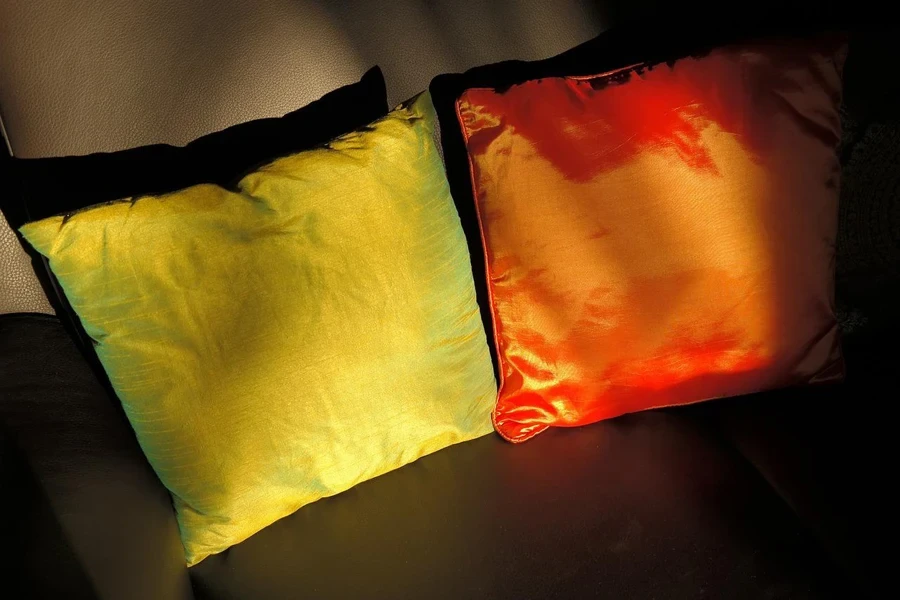
Choosing the perfect cushion covers plays a role in striking a harmonious blend of style and coziness while ensuring durability in home design schemes. Thoughtfully considering elements like the material choice, design intricacies, cover dimensions, fastening styles, and budgetary considerations can notably elevate the allure and usability of any living area. Opting for quality cushion covers enhances the overall ambiance of a space and secures lasting comfort and contentment for users.
